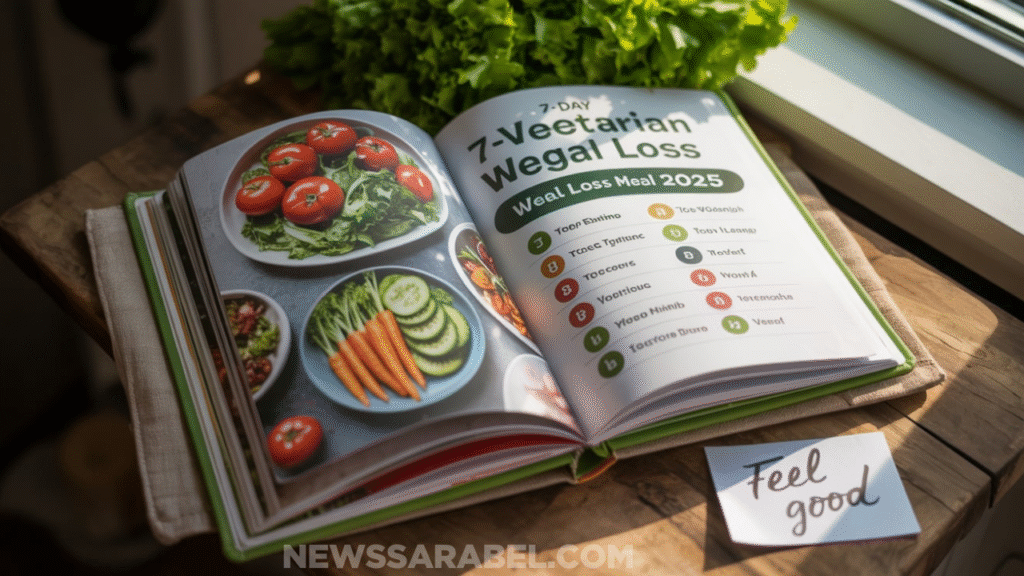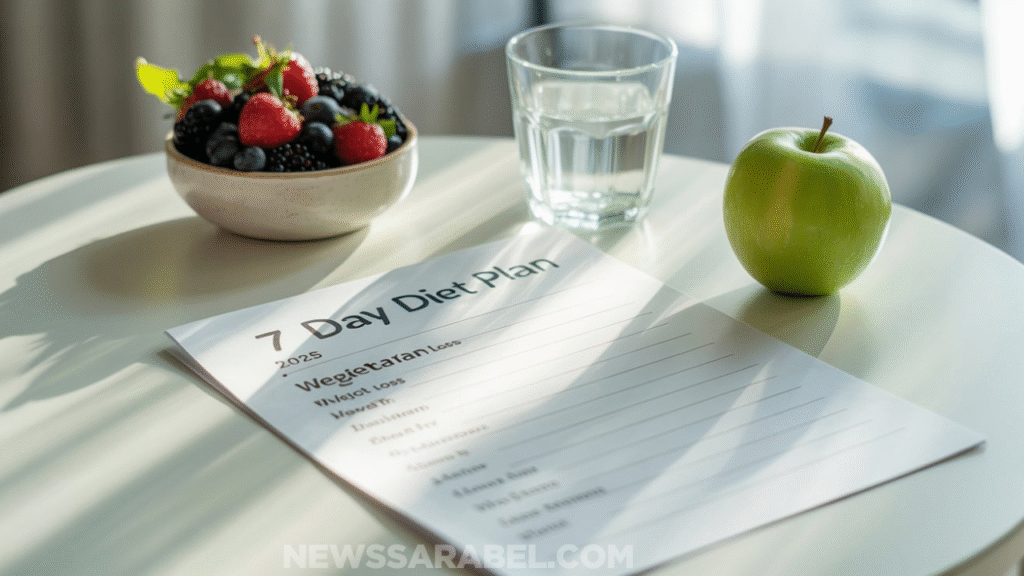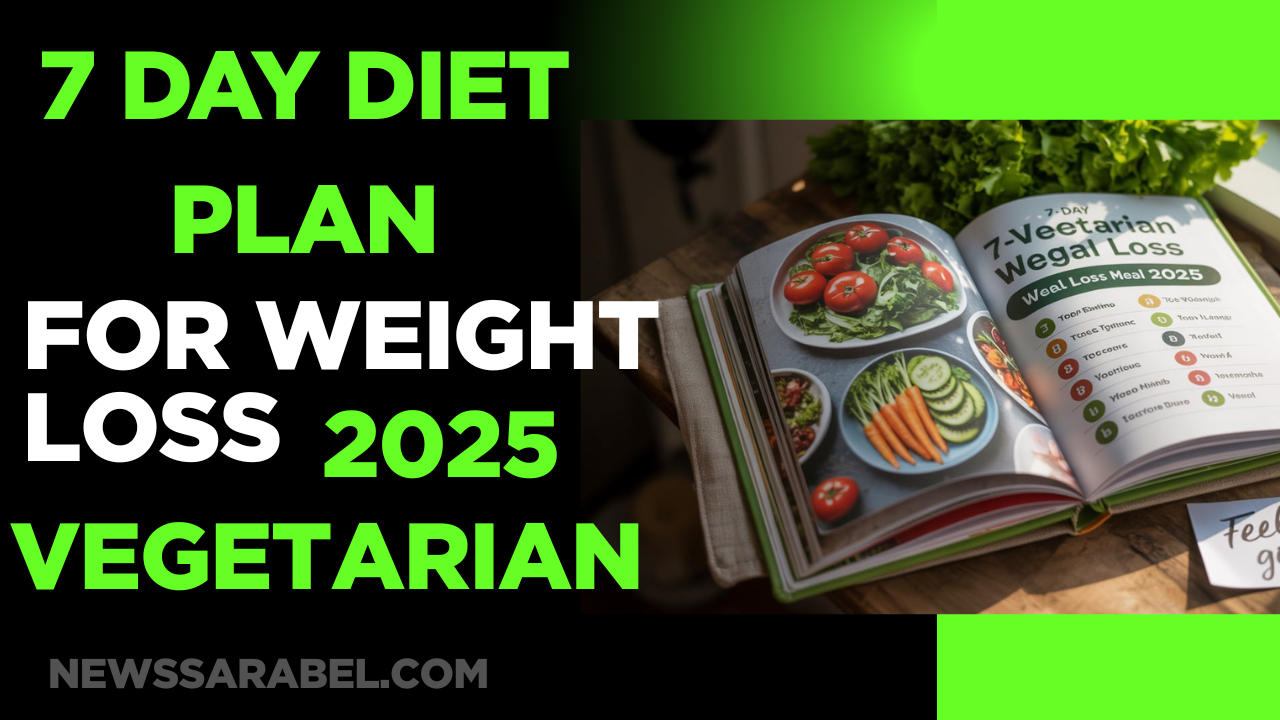Are you tired of trying fad diets that promise quick results but don’t deliver? You’re not alone. Millions worldwide are searching for a fast and healthy way to lose weight.
A seven-day diet plan for weight loss can be a great start. By following a healthy diet plan, you can boost your metabolism and energy, setting you up for long-term success.

With a good weight loss meal plan, you can reach your goals and live a healthy life. Are you ready to start your journey to a slimmer, healthier you?
Key Takeaways
- A 7-day diet plan can help you achieve your weight loss goals quickly.
- A healthy diet plan is essential for long-term weight loss success.
- A well-structured weight loss meal plan can boost your energy levels.
- Following a quick weight loss diet can jumpstart your metabolism.
- A healthy lifestyle is key to maintaining weight loss.
Understanding the Science Behind Quick Weight Loss
To reach your weight loss goals, it’s key to understand the science behind effective weight loss strategies. Losing weight isn’t just about dieting. It’s about knowing how your body reacts to what you eat and do.
Weight loss hinges on balancing calorie intake and burn. Eating fewer calories than you burn leads to using fat for energy, causing weight loss.
How Caloric Deficit Drives Weight Loss
A caloric deficit happens when you burn more calories than you eat. This forces your body to use fat for energy. It’s vital for losing weight as it affects your body’s energy balance.
For example, if you need 2,000 calories a day and eat 1,500, you create a deficit. This deficit makes your body burn 500 calories from fat. This idea is key to any low-calorie diet plan.
| Caloric Intake | Caloric Expenditure | Caloric Deficit | Weight Loss Effect |
| 2,000 calories | 2,500 calories | 500 calories | Weight loss |
| 2,000 calories | 2,000 calories | 0 calories | No weight loss |
| 2,500 calories | 2,000 calories | -500 calories | Weight gain |
Setting Realistic Expectations for a 7-Day Plan
Starting a weight loss diet plan, like a 7-day plan, needs realistic goals. Crash diets promise fast weight loss but are hard to keep up and may not last.
A 7-day plan should kickstart a healthier lifestyle, not be a quick fix. It’s about making habits you can keep up with long-term. Dr. Jane Smith, a well-known nutritionist, said,
“The key to successful weight loss is not just about the number on the scale but about creating a sustainable lifestyle change.”

Preparing for Your 7-Day Diet Plan for Weight Loss
To make your 7-day diet plan work, you need to prepare well. This means making a detailed grocery list, using good meal prep methods, and having the right kitchen tools.
Complete Grocery Shopping List
A good grocery list is key to a successful diet. Start with whole foods like veggies, fruits, lean proteins, and grains. Your list should include:
- Leafy greens like spinach and kale
- Colorful vegetables such as bell peppers and carrots
- Fruits like berries and citrus
- Lean proteins, including chicken, fish, and tofu
- Whole grains like quinoa, brown rice, and whole wheat bread
Choosing these foods helps you make a balanced and healthy diet.
Meal Prepping Strategies for Success
Meal prepping is vital for keeping on track with your diet. It means preparing meals ahead of time to save time and stay on a diet. Good meal prepping includes:
- Planning meals based on your diet plan
- Cooking in bulk to save time
- Portioning meals into individual servings
- Storing meals in airtight containers
Using these strategies helps you stick to your diet better.
Kitchen Equipment and Time-Saving Tools
The right kitchen tools can make meal prep easier. Essential tools are:
| Equipment | Use |
| Slow Cooker | Cooks meals over a long period, ideal for busy days. |
| Instant Pot | Pressure cooks meals quickly, saving time. |
| Sharp Knives | Essential for efficient food preparation. |
| Airtight Containers | Stores meals safely and keeps them fresh. |

Daily Meal Plan Breakdown
Starting your weight loss journey with a clear 7-day meal plan can significantly enhance your chances of success. A well-structured meal plan not only helps in reducing weight but also ensures that you are getting the necessary nutrients for optimal health.
Day 1: Detoxifying Start
The first day of your meal plan is all about detoxifying your body. You’ll eat foods that help remove toxins and improve digestion.
Breakfast, Lunch, Dinner, and Snacks
Start with a green smoothie for breakfast, made with spinach, banana, and almond milk. For lunch, try a salad with mixed greens, cherry tomatoes, and a light vinaigrette. Grilled chicken with steamed veggies is a good dinner choice. Snacks can be carrot sticks with hummus.
Nutritional Benefits
The green smoothie is packed with antioxidants. The salad gives you fiber. Grilled chicken adds lean protein, and carrot sticks with hummus are a healthy snack.
Day 2: Protein-Powered Day
The second day focuses on a diet rich in protein to build and repair muscles.
Breakfast, Lunch, Dinner, and Snacks
Begin with scrambled eggs and whole-grain toast for breakfast. Lunch could be a quinoa and black bean salad with grilled chicken. Dinner might be baked salmon with broccoli. Snacks are Greek yogurt with berries.
Nutritional Benefits
Scrambled eggs are a great protein source. Quinoa and black beans offer protein and fiber. Baked salmon is full of omega-3 fatty acids, and Greek yogurt with berries is packed with protein and antioxidants.
Day 3: Balanced Nutrition Focus
The third day aims to balance different food groups for a wide range of nutrients.
Breakfast, Lunch, Dinner, and Snacks
Begin with oatmeal, sliced banana, and almond butter for breakfast. Lunch could be a whole-grain wrap with roasted veggies and lean turkey. Dinner might be grilled turkey breast with roasted sweet potatoes and green beans. Snacks are apple slices with peanut butter.
Nutritional Benefits
Oatmeal gives you sustained energy. The whole-grain wrap is full of fiber. Grilled turkey breast is lean protein, and roasted sweet potatoes are rich in complex carbs.
Day 4: Midweek Energy Boost
By the fourth day, you might need a natural energy boost. The meal plan is designed to give you that lift.
Breakfast, Lunch, Dinner, and Snacks
Begin with a smoothie bowl for breakfast, topped with granola. Lunch might be a chicken Caesar salad. Dinner could be brown rice with lentil curry and steamed asparagus. Snacks are energy balls made with oats and nuts.
Nutritional Benefits
The smoothie bowl is full of vitamins and minerals. The chicken Caesar salad provides protein. Brown rice and lentil curry offer complex carbs and protein, and energy balls are a healthy snack.
Day 5: Healthy Fats and Fiber Day
The fifth day focuses on healthy fats and fiber-rich foods for heart health and digestion.
Breakfast, Lunch, Dinner, and Snacks
Start with avocado toast on whole-grain bread with a fried egg for breakfast. Lunch could be a mixed greens salad with grilled chicken, avocado, and nuts. Dinner might be baked cod with quinoa and steamed asparagus. Snacks are a trail mix with nuts and dried fruits.
Nutritional Benefits
Avocado toast is a good source of healthy fats. The mixed greens salad with avocado and nuts provides healthy fats and fiber. Baked cod is rich in omega-3 fatty acids.
Day 6: Strategic Carbohydrate Day
The sixth day focuses on strategic carbohydrate intake to replenish energy stores.
Breakfast, Lunch, Dinner, and Snacks
Start with whole-grain pancakes with fresh berries and yogurt for breakfast. Lunch might be a whole-grain pasta salad with veggies and lean turkey. Dinner could be grilled chicken with roasted veggies and quinoa. Snacks are fruit salad.
Nutritional Benefits
Whole-grain pancakes provide complex carbs. The whole-grain pasta salad offers carbs and fiber. Grilled chicken with roasted veggies and quinoa is a balanced meal.
Day 7: Metabolism-Boosting Finale
The last day of the meal plan aims to boost your metabolism and give you energy.
Breakfast, Lunch, Dinner, and Snacks
Start with a green smoothie with protein powder for breakfast. Lunch could be a grilled chicken breast with mixed greens and a whole-grain wrap. For dinner, try baked chicken thighs with roasted Brussels sprouts and sweet potatoes. Snacks can be protein bars.
Nutritional Benefits
The green smoothie with protein powder aids in muscle repair. Grilled chicken breast offers lean protein. Baked chicken thighs with roasted vegetables provide a mix of protein and fiber.
Hydration and Supplementation Strategy
Improving your hydration and supplement routine can greatly boost your 7-day diet results. Drinking enough water is key for keeping your metabolism running smoothly, controlling hunger, and supporting your body’s functions.
Optimal Water Intake Schedule
To keep hydrated, aim for 8-10 glasses of water a day. Start with a glass of water when you wake up to rehydrate after sleep. Drinking water before meals can also help control how much you eat and improve digestion.
- Drink water as soon as you wake up.
- Have a glass of water before each meal.
- Stay hydrated by sipping water throughout the day.
Herbal Teas and Detox Drinks
Adding herbal teas and detox drinks to your routine can help with hydration and weight loss. Green tea is known for boosting metabolism. Other good choices include peppermint tea, ginger tea, and lemon detox drinks.
Safe Supplements to Consider
Even with a balanced diet, some supplements can fill nutritional gaps. Multivitamins and probiotics are often chosen for their health and digestive benefits during dieting.
- Always talk to a healthcare professional before taking supplements.
- Choose supplements from trusted brands.
Strategic Exercise Plan for Maximum Results
Having a good exercise plan is crucial for losing weight and staying fit. A balanced routine should include cardio, strength training, and stretching. This will help you get the most out of your 7-day diet plan.
Morning Cardio Routines
Starting your day with morning cardio boosts your metabolism and energy. Try brisk walking, jogging, cycling, or swimming for 20-30 minutes. It burns calories and sets a positive tone for the day.
Strength Training Circuits
Strength training builds muscle, which boosts your metabolism. Choose exercises that work many muscles at once, like squats, lunges, push-ups, and rows. Do 2-3 sets of 8-12 reps for each exercise.
Evening Stretching and Recovery
Evening stretching is key for recovery and flexibility. Gentle stretches can reduce muscle soreness and improve sleep. Focus on major muscle groups, holding each stretch for 15-30 seconds.
| Exercise Type | Duration/Repetitions | Benefits |
| Morning Cardio | 20-30 minutes | Boosts metabolism, energy |
| Strength Training | 2-3 sets of 8-12 reps | Builds muscle, enhances metabolism |
| Evening Stretching | 15-30 seconds per stretch | Aids recovery, improves flexibility |
Troubleshooting Common Diet Challenges
Staying on track with your diet plan is not just about willpower. It also needs a deep understanding of common obstacles. Knowing these challenges and how to beat them can be a game-changer.
Managing Hunger Pangs and Cravings
To fight hunger pangs and cravings, eat foods high in fiber and protein. These keep you full for longer. Also, drink lots of water and add healthy fats to your meals to cut down cravings.
Dealing with Energy Fluctuations
Energy fluctuations can be lessened by eating balanced meals. Make sure each meal has complex carbs, lean proteins, and healthy fats. Avoid too much caffeine and sugar to keep your energy steady.
Adjusting the Plan for Different Body Types
Knowing your body type is key to customizing your diet. For instance, ectomorphs might need more calories, while endomorphs should eat fewer. Mesomorphs usually do best with a balanced diet. Adjusting your portion sizes and macronutrient ratios can make your diet more effective.
| Body Type | Dietary Adjustment |
| Ectomorph | Increase calorie intake with nutrient-dense foods |
| Mesomorph | Balance macronutrients for optimal performance |
| Endomorph | Reduce calorie intake, focus on low-carb and high-protein foods |
Conclusion
You now have a detailed 7-day weight loss meal plan. It’s designed to help you lose weight quickly and reach your goals. This diet is healthy, easy to follow, and gives fast results.
Following this diet will improve your health and well-being. The 7-day meal plan is a great start for your weight loss journey. It teaches you healthy eating habits that last.
Start your journey to a healthier, happier you today. Begin with this 7-day weight loss meal plan. It’s the first step to a slimmer, more energetic you.
FAQ
What is a 7-day diet plan, and how does it work?
A 7-day diet plan is a meal plan for quick weight loss. It combines healthy eating, portion control, and eating fewer calories. This helps you lose weight fast.
Is a 7-day diet plan safe for everyone?
Most people can safely follow a 7-day diet plan. But it’s not good for everyone. People with diabetes or those who are malnourished should talk to a doctor first.
How much weight can I expect to lose on a 7-day diet plan?
Weight loss on a 7-day diet plan varies. It depends on your starting weight, how active you are, and if you stick to the plan. Losing 1-2 pounds a week is safe and doable.
Can I customize the 7-day diet plan to suit my dietary preferences?
Yes, you can make the 7-day diet plan fit your tastes. You can choose vegetarian or gluten-free options. Just make sure it still gives you all the nutrients you need.
How can I maintain my weight loss after the 7-day diet plan?
To keep the weight off, adopt healthy eating habits. This includes meal prep, balanced meals, and controlling portions. Adding exercise and managing stress also helps keep the weight off for good.
Are there any effective weight loss strategies to complement the 7-day diet plan?
Yes, there are ways to boost your weight loss. Regular exercise, drinking enough water, and getting enough sleep can help. These habits support your weight loss goals.
Can I follow a low-calorie diet plan for an extended period?
Low-calorie diets work for short-term weight loss. But, it’s not safe to follow them for a long time without a doctor’s advice. It can cause nutrient deficiencies.
How can I avoid common diet challenges, such as hunger pangs and energy fluctuations?
To avoid hunger and energy ups and downs, eat foods rich in nutrients. Drink plenty of water and stay active. Adjusting your diet to fit your needs can also help.
